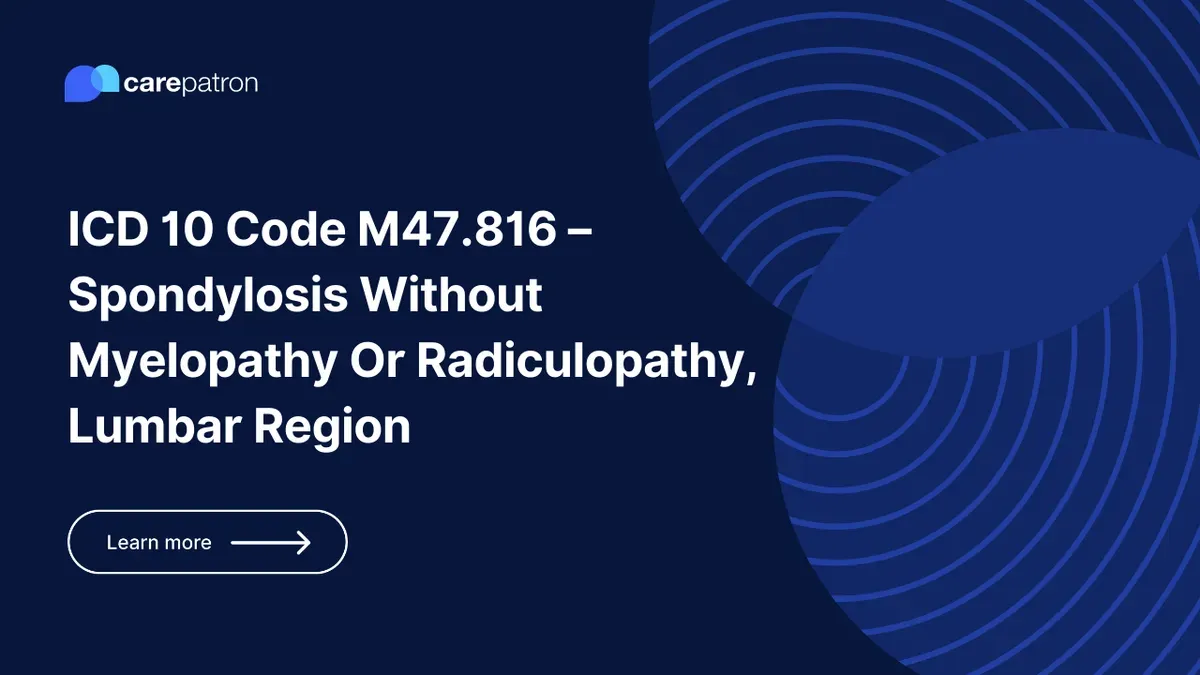
M47.816 -Spondylosis Without Myelopathy Or Radiculopathy, Lumbar Region
Discover the ICD-10-CM code M47.816 for lumbar spondylosis without myelopathy or radiculopathy, including clinical information, synonyms, related codes, & FAQs.
Use Code
Commonly asked questions
Yes, untreated or poorly managed lumbar spondylosis can contribute to more severe spinal conditions such as spinal stenosis or spondylolisthesis.
Yes, in severe cases or when conservative treatments fail, surgery may be considered, including spinal fusion or disc replacement.
While age-related wear and tear on the spine cannot be entirely prevented, maintaining a healthy lifestyle, practicing proper posture, and engaging in regular exercise can help reduce the risk of developing lumbar spondylosis.
EHR and practice management software
Get started for free
*No credit card required
Free
$0/usd
Unlimited clients
Telehealth
1GB of storage
Client portal text
Automated billing and online payments
